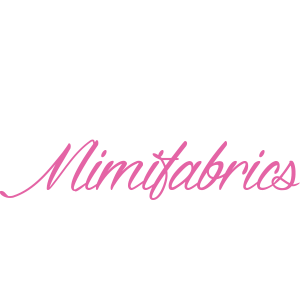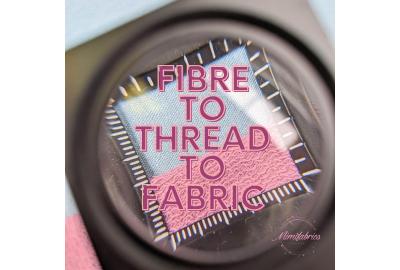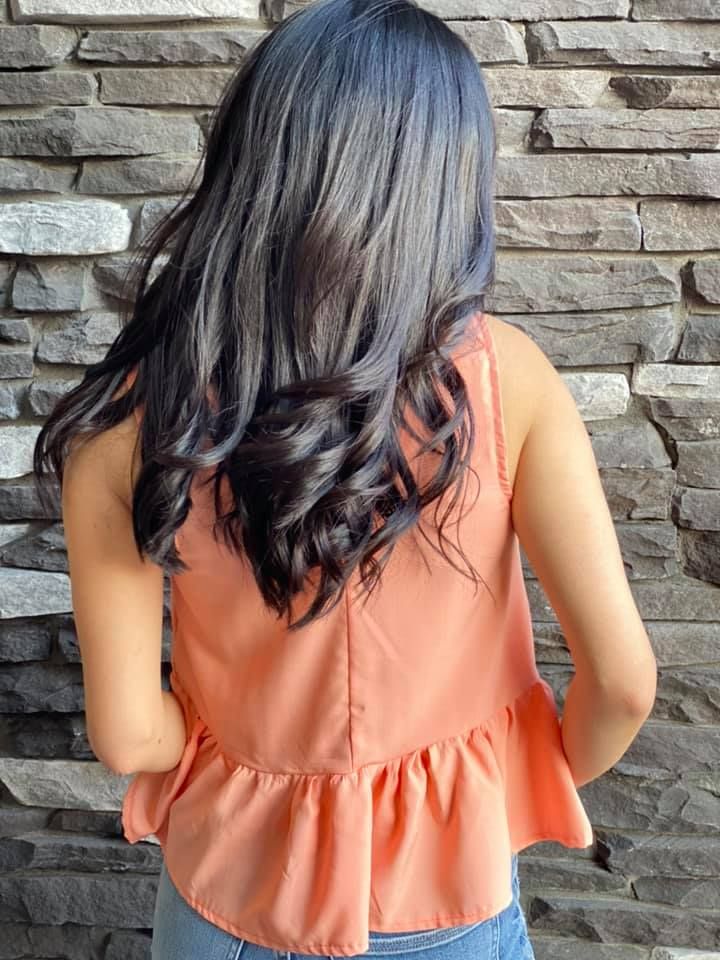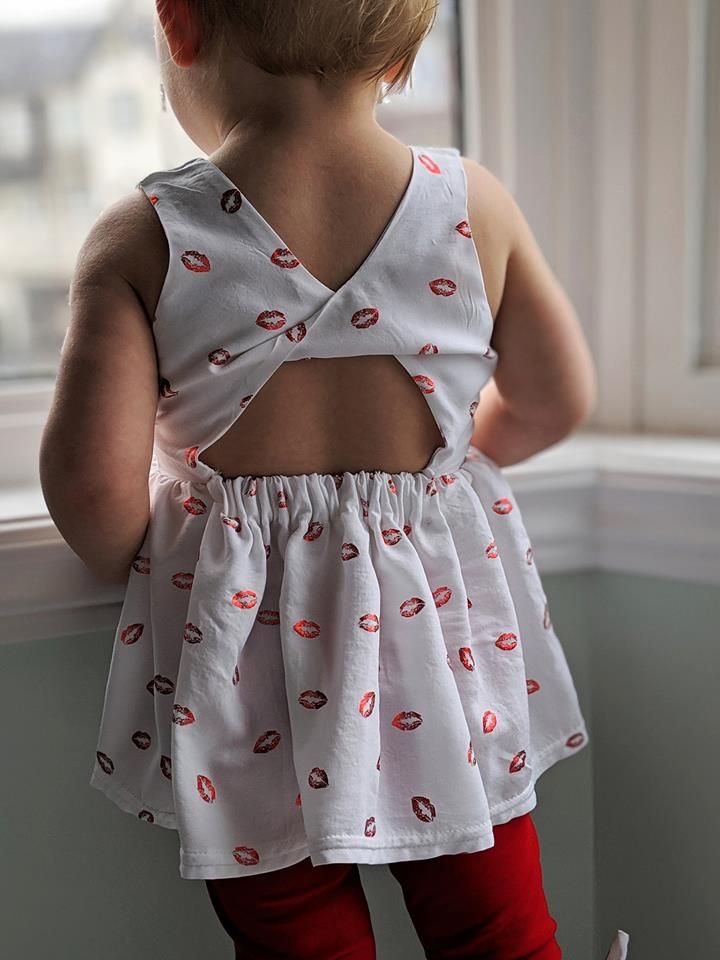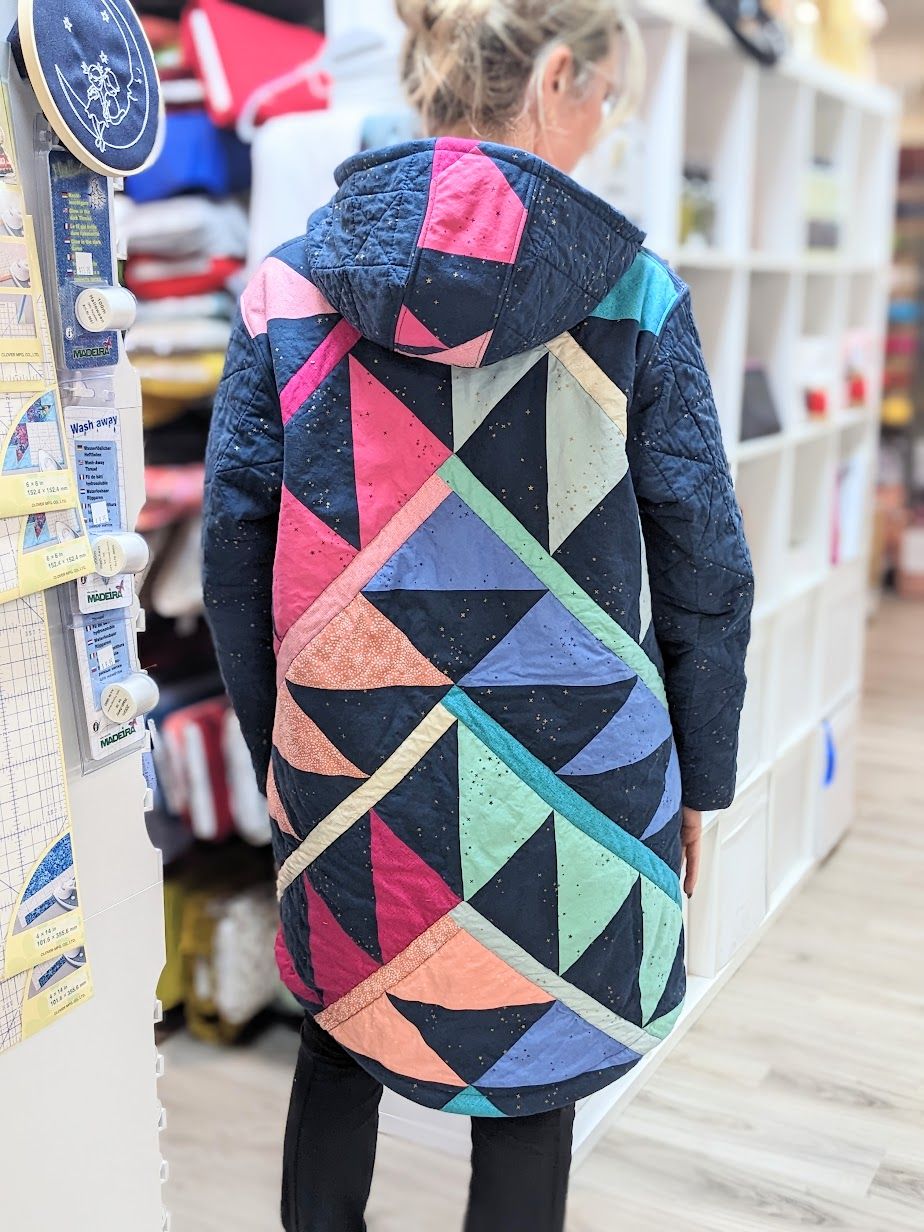One of the most common questions we get asked at the Mimi shop is about all the different types of fabrics, and how to differentiate between them. More often than not, the terms for fibres and fabrics get mixed up, leading to much confusion. In this blog post, I would like to help you understand the differences, and learn more about this very important aspect of fabric selection.
Let’s start right at the beginning - the most basic way to look at it is - FIBRE to THREAD/YARN to FABRIC
Once we start getting into the details, it gets just a teeny bit more complex.
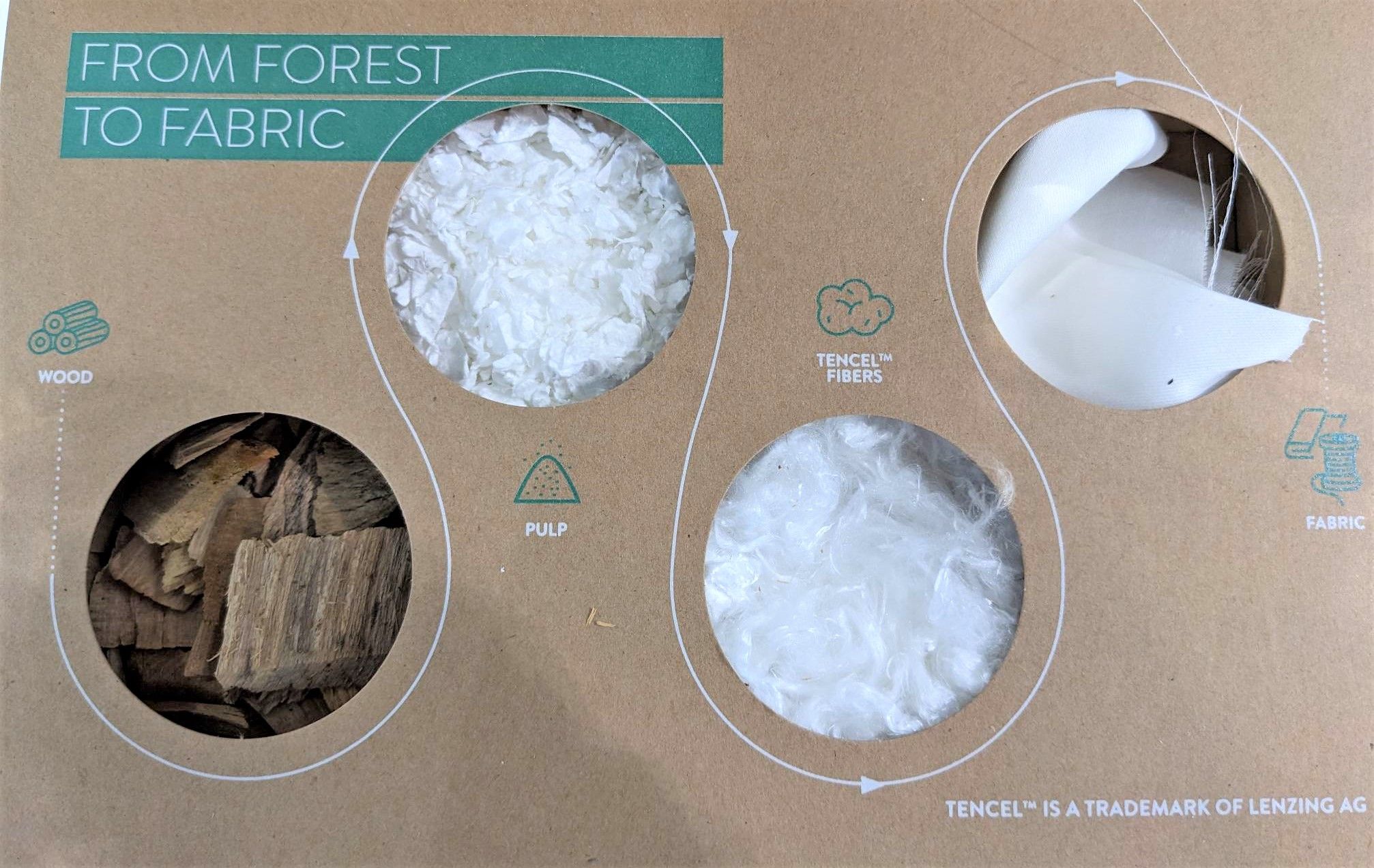
FIBRES
Everything begins with the fibres! They are the building blocks of your fabrics, and getting to know them better will help you to understand the properties of a particular fabric.
There are three main categories of fibres - natural, synthetic, and man-made (derived from natural fibres).
Here are some examples of the most common fibres.
Natural fibres:
- Cotton
- Silk
- Wool
- Linen
Synthetic fibres:
- Acrylic
- Polyester
- Nylon
- Elastane
Man-made fibres (derived from natural fibres):
- Bamboo
- Rayon
- Viscose
- Modal
THREAD/YARN
Once the fibres have been cleaned and dyed (among other things), they can then be made into yarns that have different properties based on the twist and ply.
Twist refers to the direction in which the yarn is spun, and ply refers to the thickness of the yarn.
The thickness of the yarn used for your fabric determines both the texture and weight.
Depending on the ply, your fabric can range from thin and smooth, to thick and textured. Also, in this step of the process, fibres can be made into single fibre yarn or blended yarns.
FABRICS
Now that we know the basics, we can dive into what we care about most. FABRIC!
The two most common techniques to create fabric are weaving and knitting. Other techniques include felting, tatting and crochet.
Woven fabrics
Woven fabrics are made by interweaving two sets of thread, warp (vertical) and weft (horizontal) on a weaving loom. The three most common types of weaves are:
Plain weave:
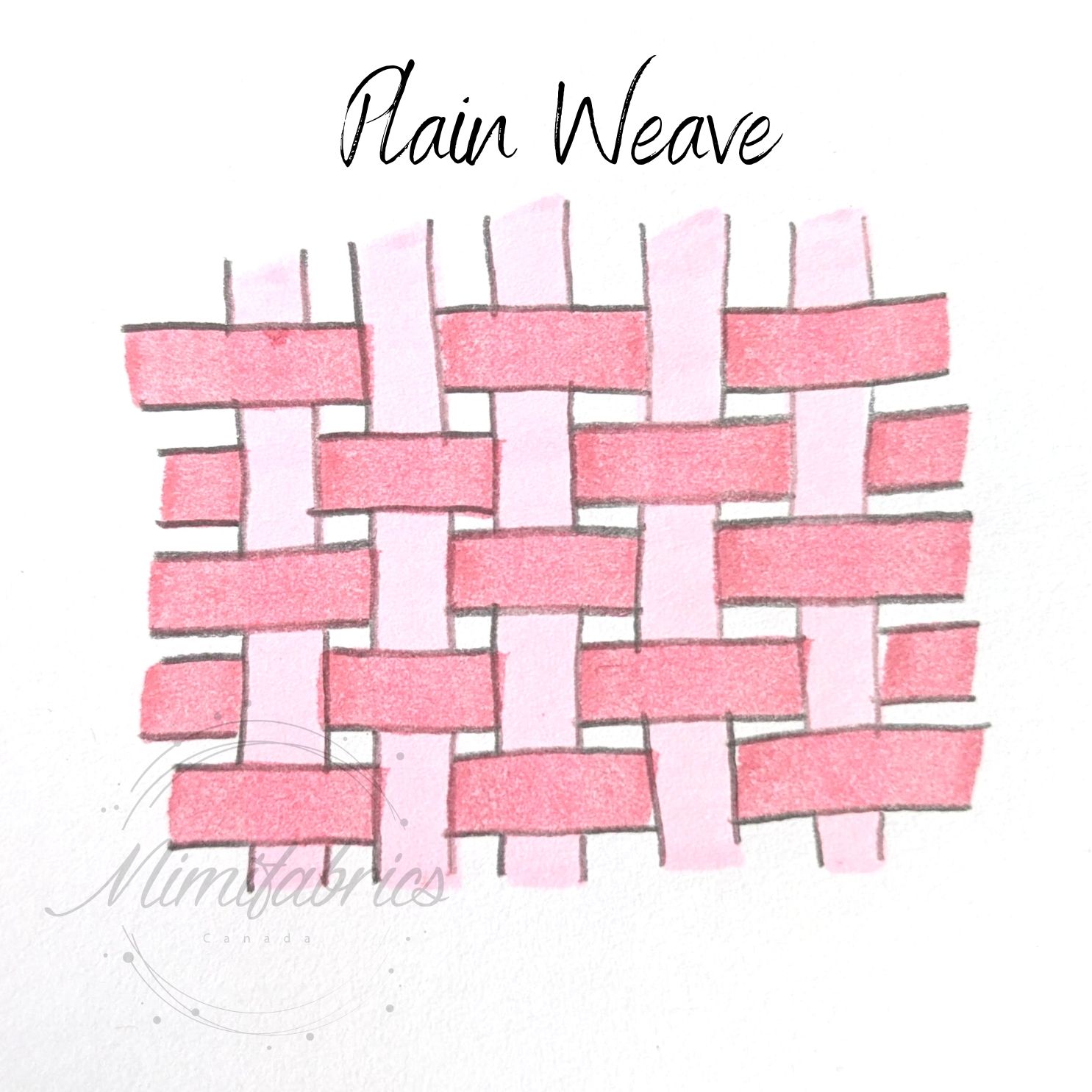
A plain weave is the most basic type of weave where the warps and wefts crisscross at a 90 degree angle, always passing over one thread and then under the next thread continuously. Depending on the fibre this type of fabric can be coarse or smooth, stiff or drapey.
Examples of plain weave fabrics:
- Poplin
- Chiffon
- Organza
- Canvas
- Challis
Twill weave:
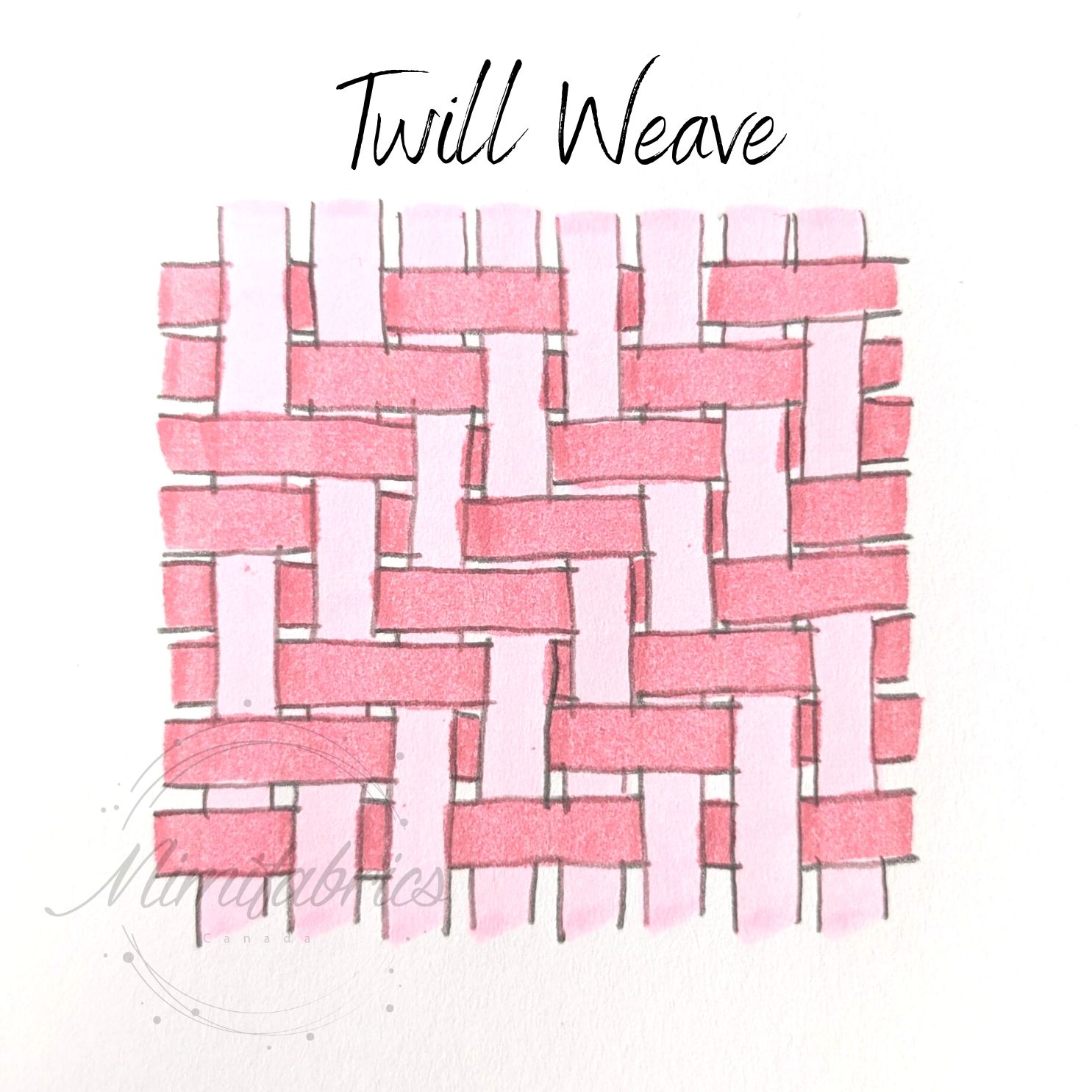
A twill weave looks as if it has a diagonal line or ribbed effect due to the arrangement of the threads. In a twill weave the weft yarn crosses over and then under two or more warp yarns. The line created by this visual effect is also called “wale”. Twill weaves are a more durable type of weave compared to a plain weave. They tend to drape better and not wrinkle as fast as other types of fabrics.
Examples of twill weave fabrics:
- Denim
- Flannel
- Chino
- Gabardine
- Canvas
Satin and sateen weaves:
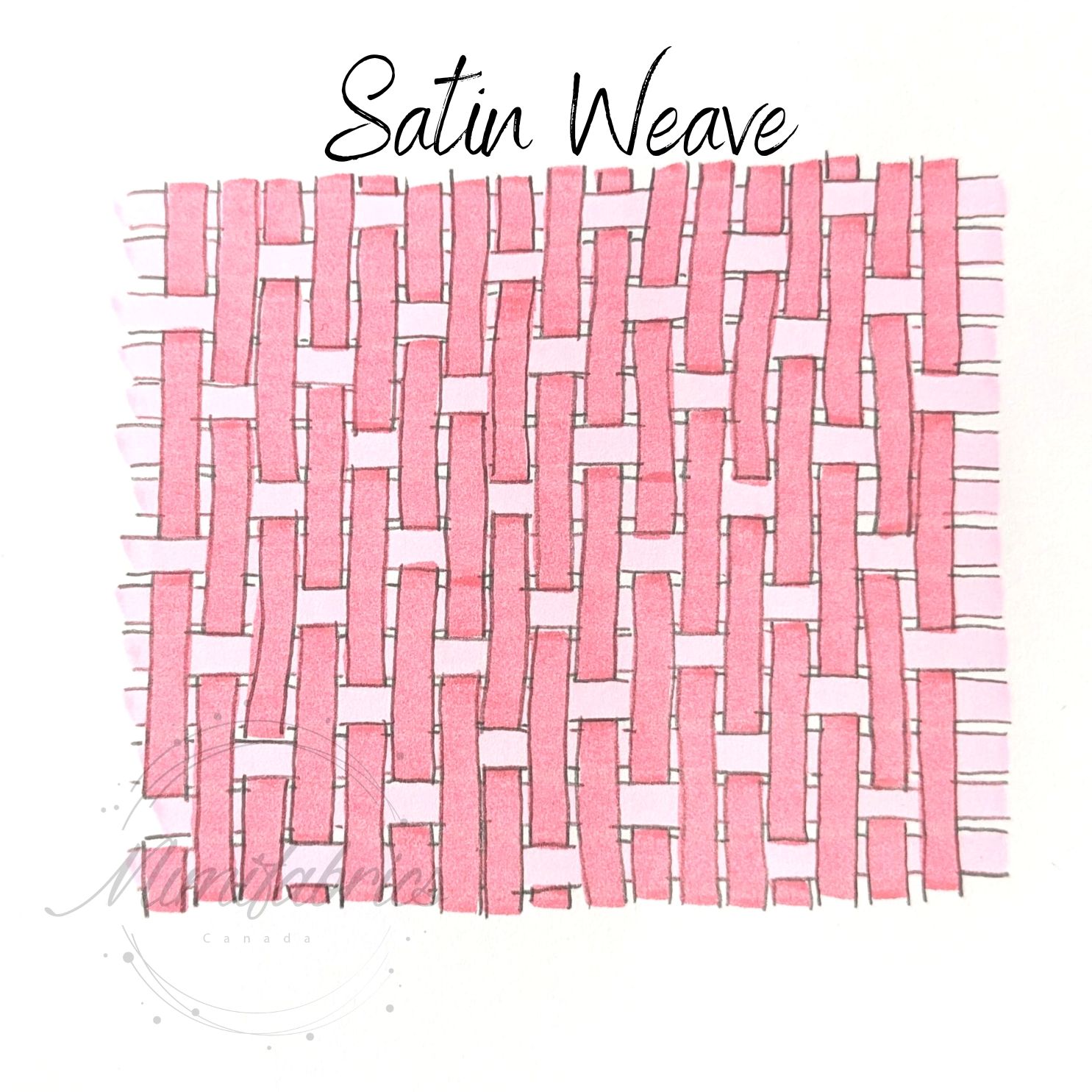
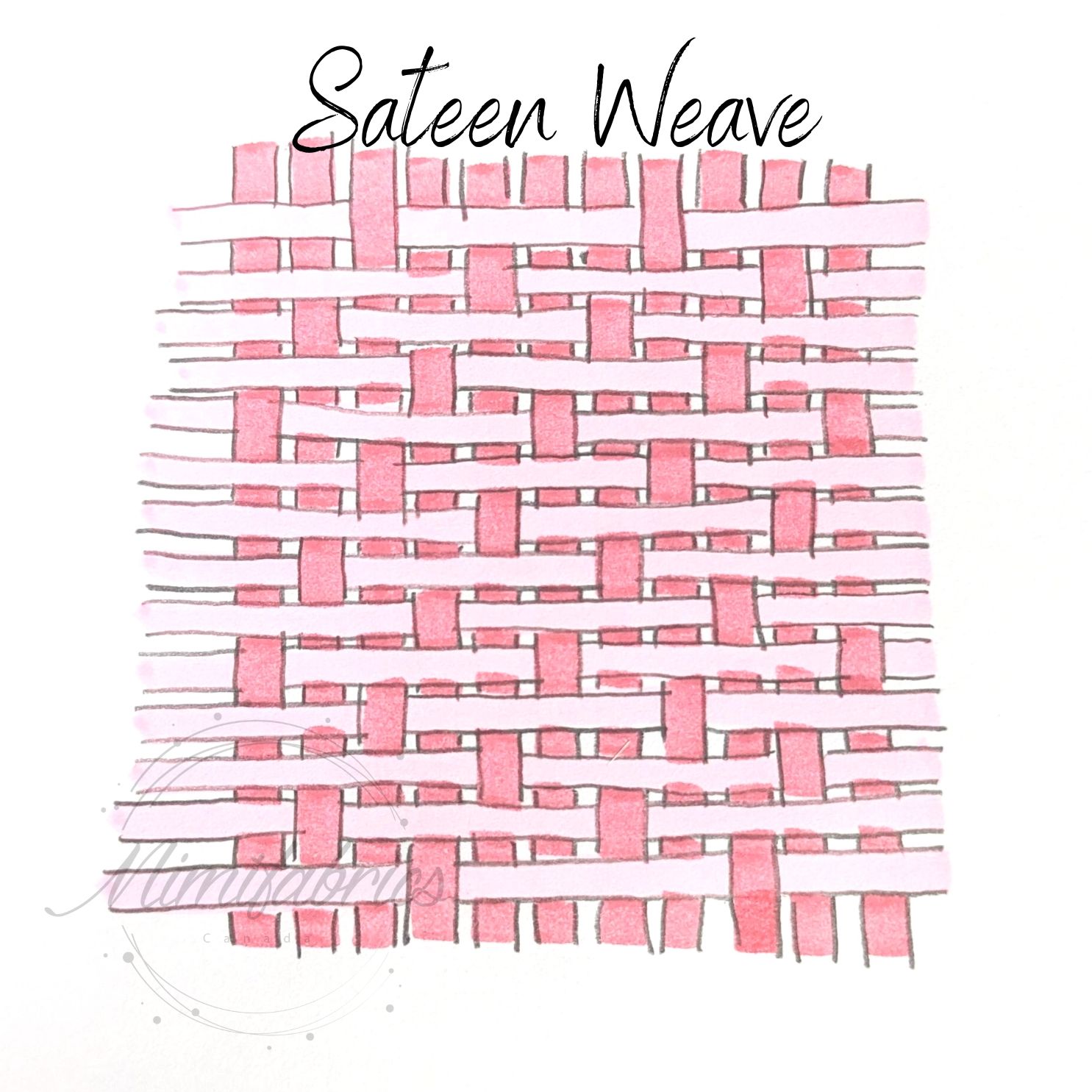
The most obvious sign of a satin weave is the high sheen and beautiful reflection of light. A sateen, on the other hand, has a matte sheen and does not reflect light.
Both satin and sateen have a smooth surface and feel very similar because of the way they are made. Sateen has more warp threads on the face side whereas satin has predominantly weft threads on the right side.
Satin is traditionally made from silk but can also be made from synthetic fibres.
Sateen is usually produced from cotton or cotton blend yarns.
Knit fabrics
Knit fabrics are made by linking loops of thread together. This can be achieved either by hand using individual needles, or with knitting machines. The quality of your fabric (smooth, chunky, textured) is determined by the size and type of stitches, as well as the thickness of the yarn used.
Common knit fabrics:
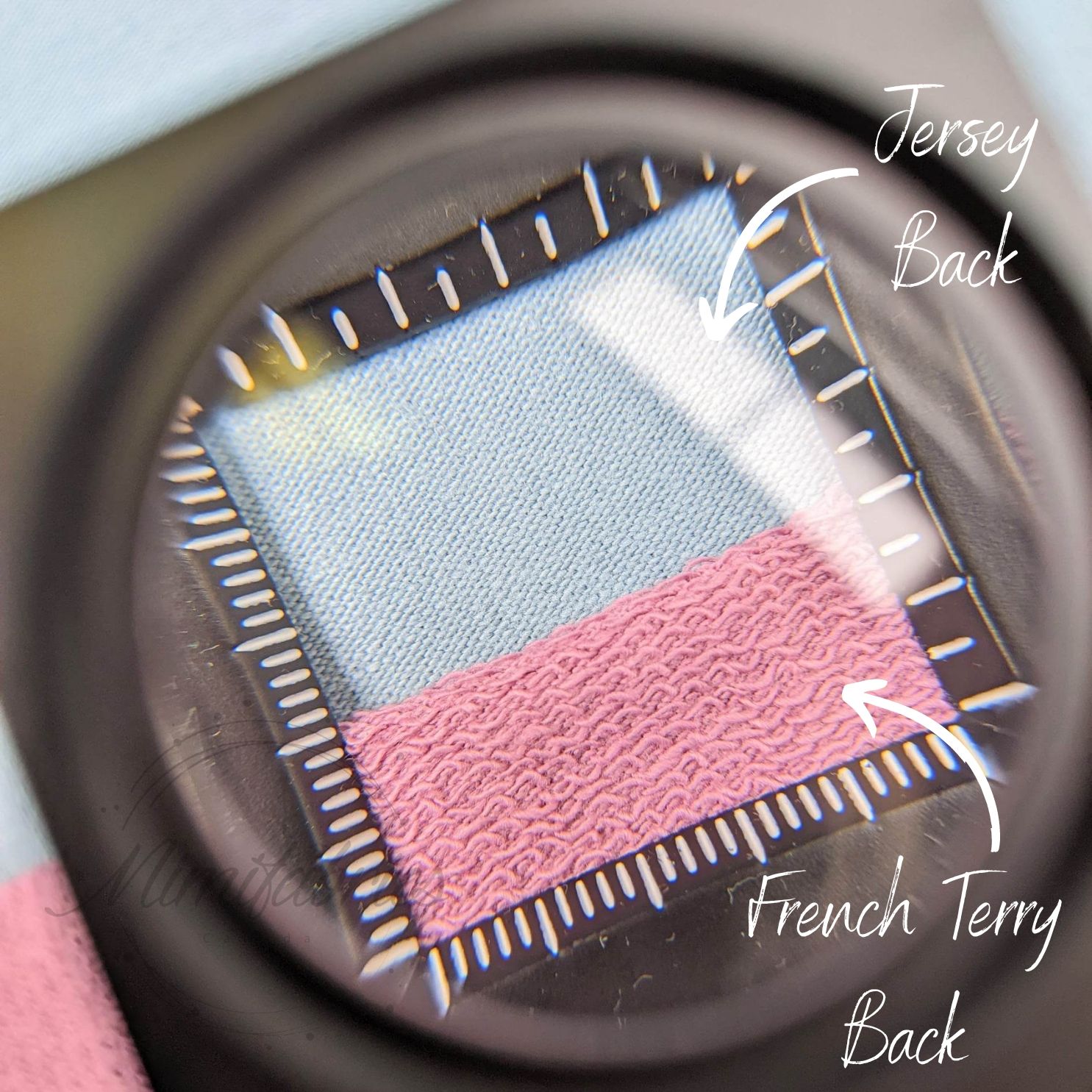
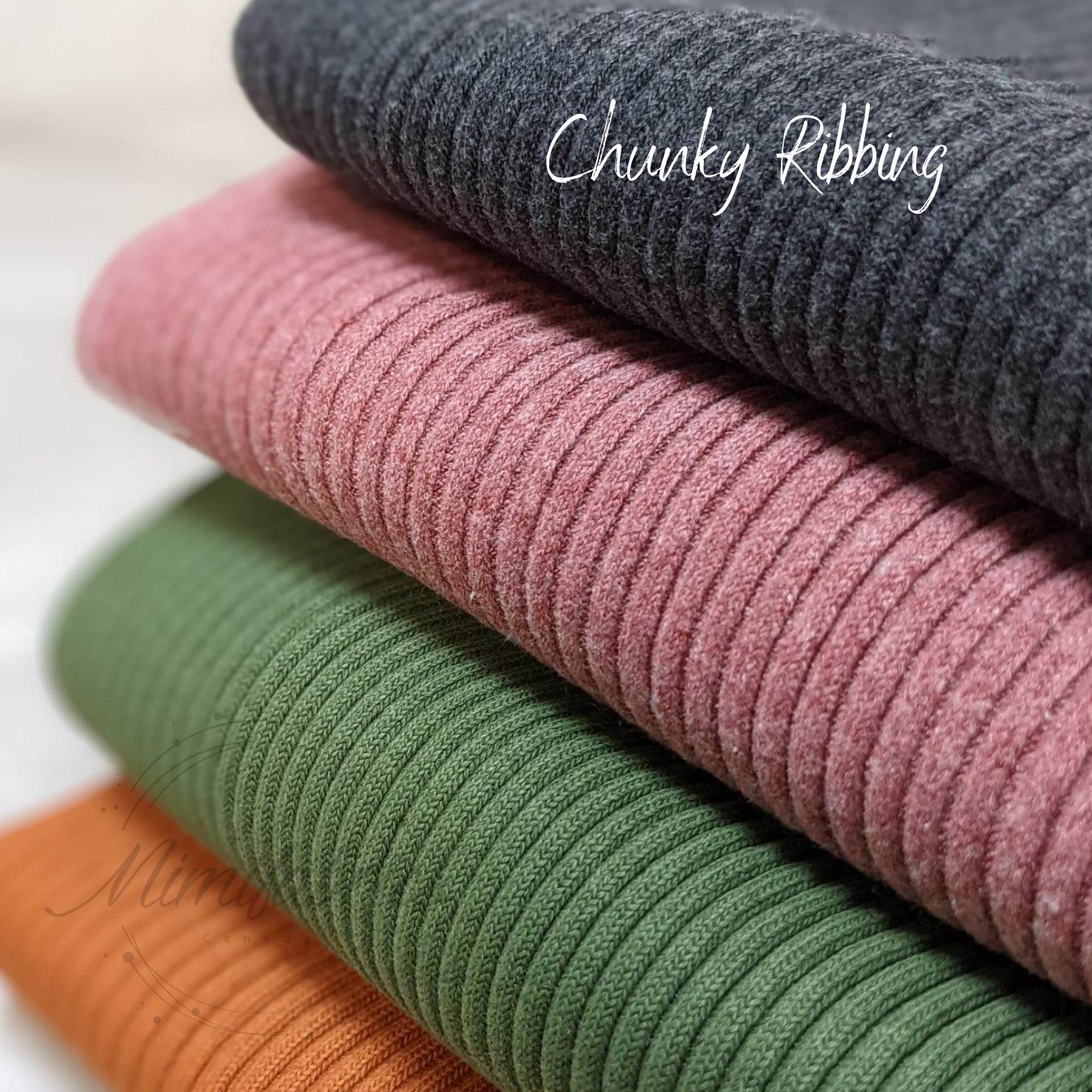
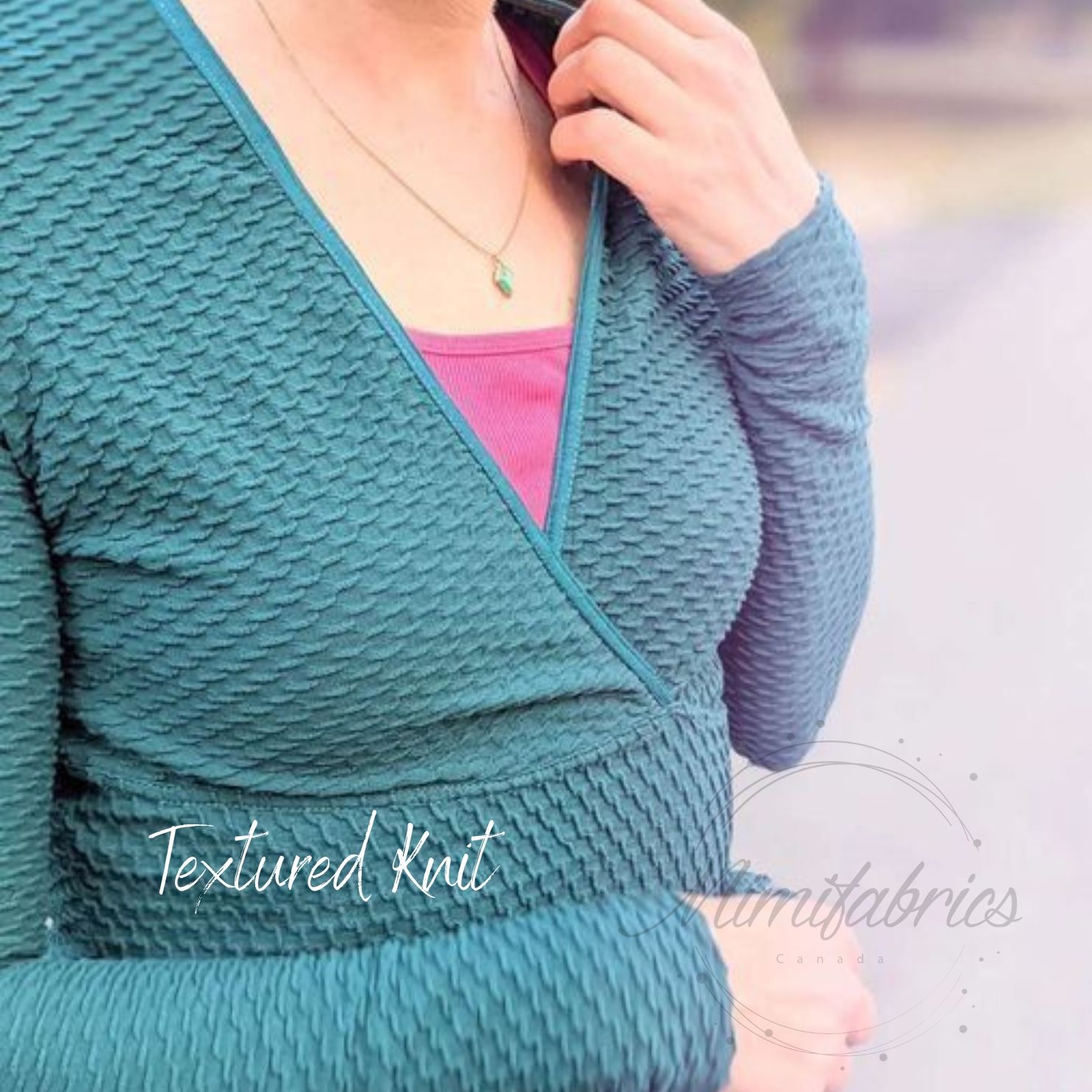
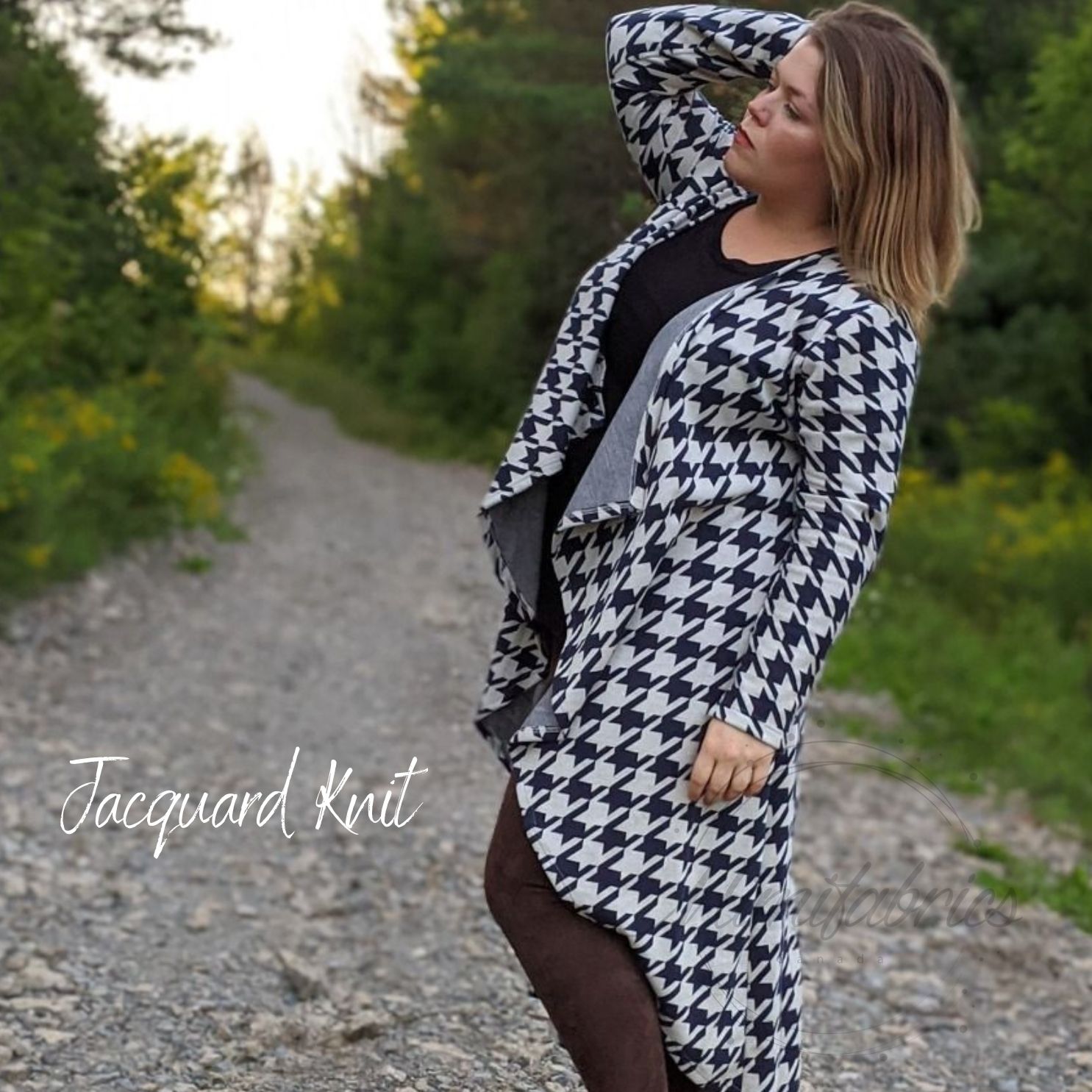
Jersey
A lightweight fabric with a smooth (right) side and a small smooth looped (wrong) side. This type of fabric is often used in t-shirts and other garments where a light stretch is required.
French Terry
A light to medium weight knit with a smooth (right) side and visible loops on the other (wrong) side. French terry provides more body and is often used in sweatshirts and joggers which require a bit more thickness.
Jacquard
Produced by a knitting technique that uses different color threads to achieve a pattern on the right side or both sides of the fabric. This fabric is predominantly seen in cardigans, sweaters and jackets as it often is thicker and warmer than other knit types. The beautiful patterns that can be achieved with this knitting technique makes it ideal for eye catching statement garments.
Ribbed knit/ribbing
Ribbing can come in both a tubular or flat form. It is made with knit and purl stitches, which gives a grooved pattern that can be almost invisible (smooth), to very visible. These grooves not only add visual interest but also provide extra mechanical stretch to the fabric.
Because of this extra mechanical stretch, ribbing is often used for cuffs and necklines where the extra stretch and recovery is required. It also lends itself to tight-fitting but comfortable whole garments due to its great stretch.
Textured knits
Can be made of various combinations of knit, purl, and added and dropped stitches to achieve textures. Textured knits are three dimensional in design and add a visual interest to the fabric.
Interlock
A fabric with a double knit construction which results in two right sides. Essentially this is two layers of jersey knit permanently knitted together making it a thicker fabric that looks identical on both sides. The double layer adds firmness and prevents rolling of the edges of this fabric making it ideal for garments with unfinished edges.
We hope you have found this informative and useful for your fabric journey!
Want to know more about fabric? Leave us a comment below!
